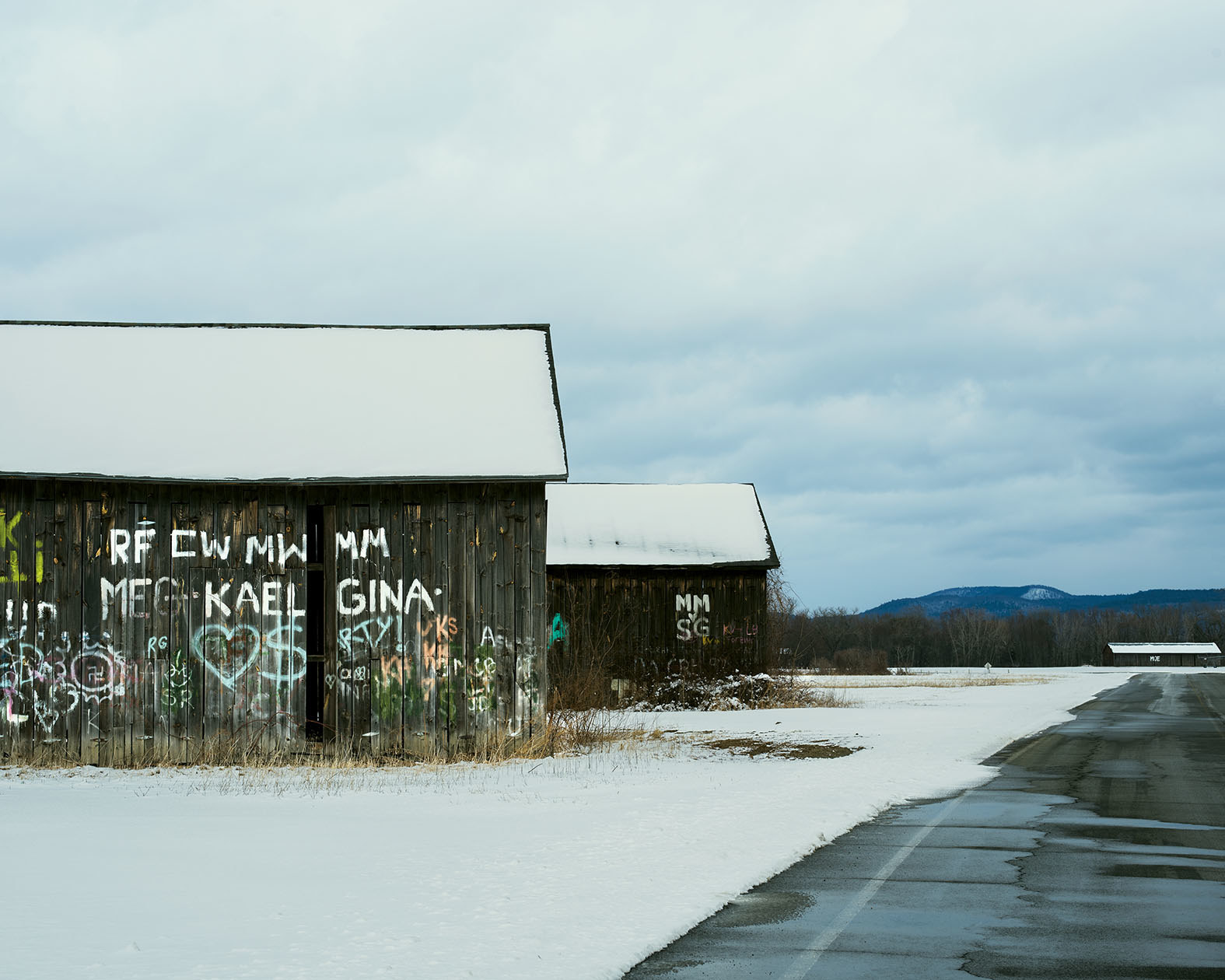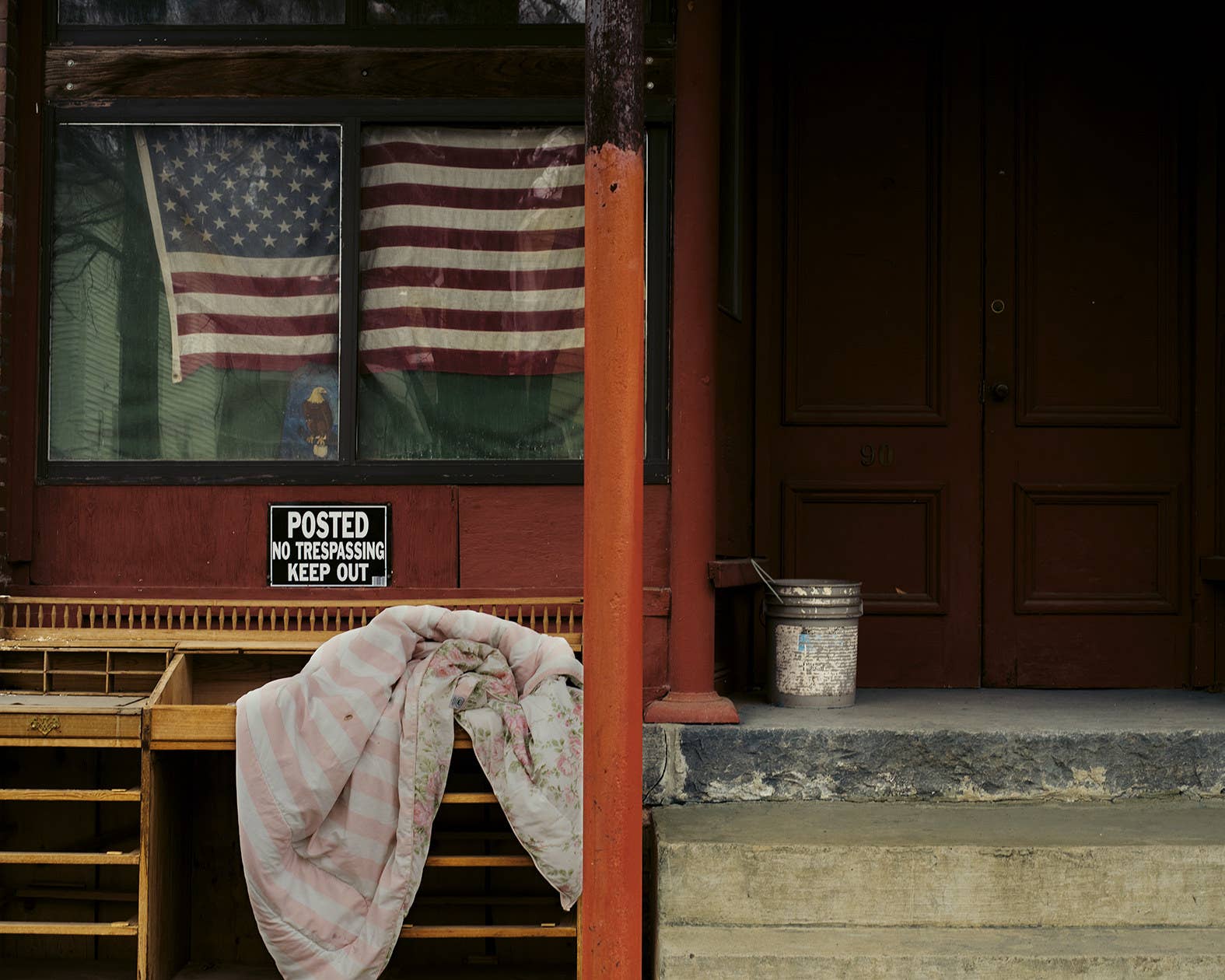
After the last year, we've all had a chance to reflect on what home means, and for many people, it's not always the most comfortable place to be. Nick Meyer, a New England-based photographer, has recently come out with a book, The Local, that is explicitly about his hometown — but it’s also a bit about yours. His work captures subjects that are familiar to many: issues with addiction, housing insecurity, an overall sense of small-town decline. It also opens up questions about what it means to love a place and what we owe each other.
Meyer, who is from a relatively privileged background, is admittedly biased — and his work will likely not be purchased by the local tourism board anytime soon. He offers a raw take on where we are as a society and the issues we need to examine more closely.
This act of observation is both painful and powerful. While it is something of a rite of passage for young photographers to explore their hometown, there is also a long list of legends whose work has shaped how we view ourselves, sometimes for the better. Meyer himself put together a zine to raise money for people experiencing homelessness while working on this book, after an encampment was set up in front of the town hall. "That project gave me a lot of clarity about what this book is and how I was going about it," he said.
Meyer spoke with BuzzFeed News by phone and email to talk about his book, which local residents have complicated feelings about.
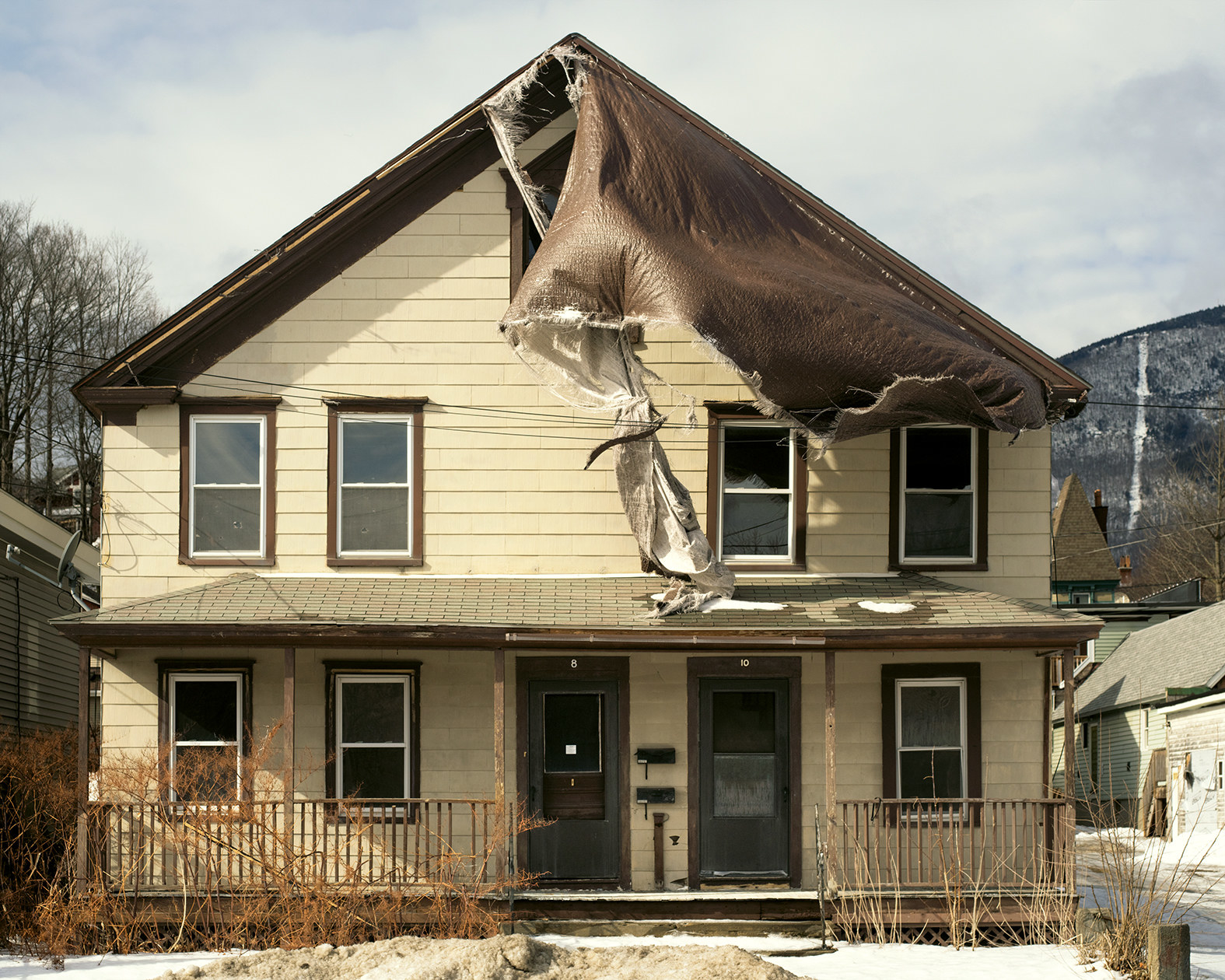
How would you describe area?
It is really important for me that this is represented as a region more than as a town. It's varied, and the pictures themselves are looking at one side. If you’re driving down Route 2, which goes through Massachusetts, it's a fascinating drive. A length of it is the Mohawk Trail, which the Native Americans would use as a trade route. By the middle of the 20th century, it became America’s highway. It was one of the early roads that people would use for road trips. It's still pockmarked with these really kind of racist Indian trading posts that were tourist attractions.
Route 91, another road that crosses through here, is known as the “heroin highway.” It’s also referred to as the “academic corridor” because it goes through all these colleges. That was one thing that was interesting to me, that there are these two sides to this place. From one to the next, the socioeconomic makeup of each town is almost completely different.
So you’re trying to show the underside?
I wouldn’t even call it an underside, because it's right there. Most of the pictures I'm taking are on the main streets. I'm not doing anything spectacular here like some hard-hitting investigative journalism. It's all in front of us, and that's what I mean by this ignored side. And it’s something that I do. I go to the co-op and get my organic food and walk right by some of these issues that are part of the makeup of not just this place but really anywhere. This book was a way for me to contend with that and face my position and what my own status here is.
For a lot of photographers, it's where they tend to go, but for me that was where I needed to go, that side that felt ignored to me.
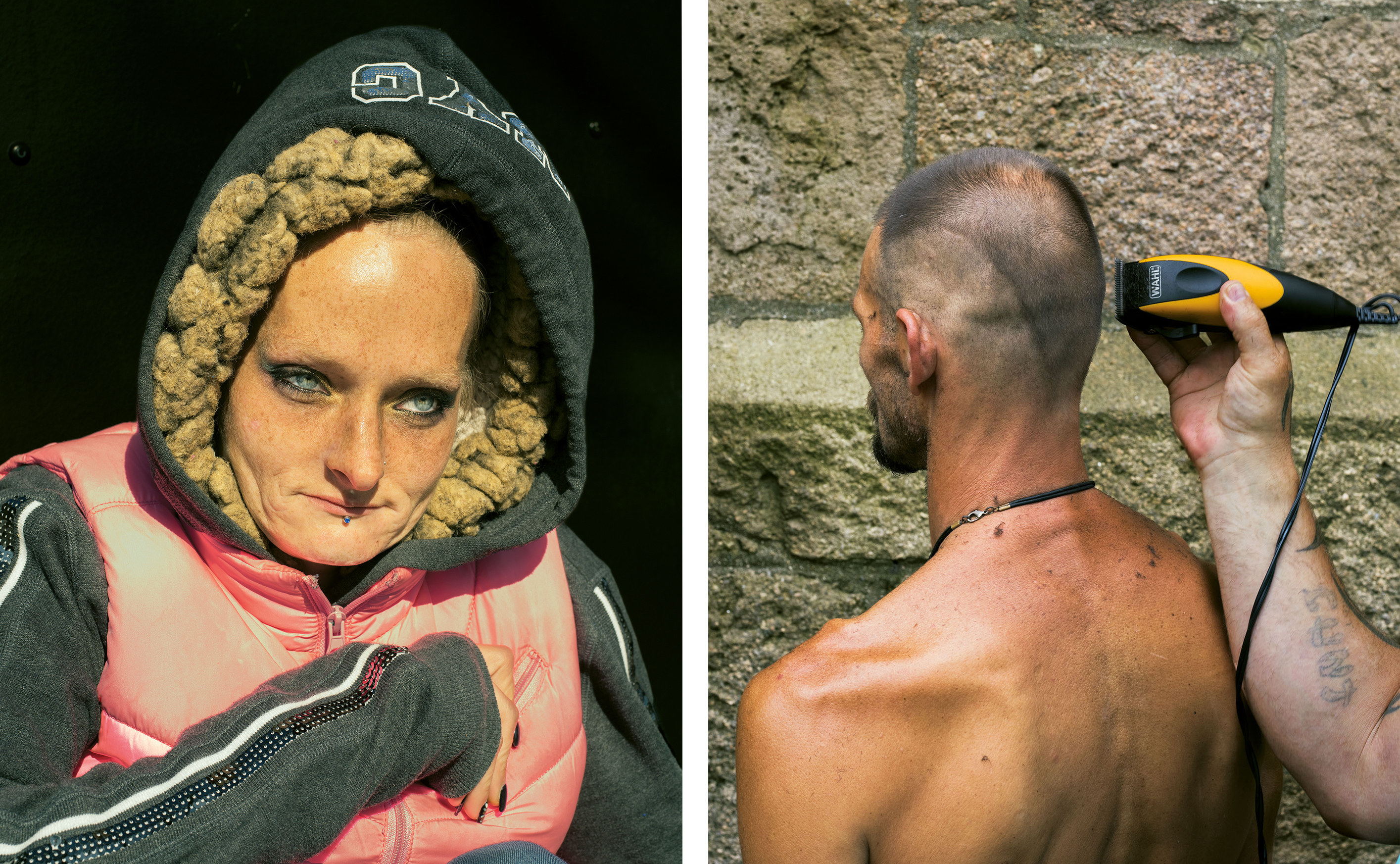
Can you spell out some of the issues and themes you chose to highlight?
Growing up here, being from a place, and the idea of home were [themes that were] driving me, but I was also focusing on some of the other political and social issues that affect most smaller towns these days.
The opioid crisis passes through here. A highway runs through this area, and its used to move drugs from the south to the north.
There is the fact of post-industrialization — there were a bunch of tool factories and paper mills, but all that sort of stuff was basically gone by the time I was 7 years old. The factories that were in these small towns once gave them more economic stability and jobs, so I was looking at that, but not so explicitly, because I wasn’t going into the factories.
Those are the two social driving forces. I'm trying to highlight that this is home, and that home has its flaws and it can be anywhere. There are these sides to every town that we just pass over and write off.
The title is a reference to “Paterson” by William Carlos William, where in that poem he’s writing about the city of Paterson in New Jersey and the character who is wandering around his familiar surroundings, discovering what it means to be from somewhere. So I liked the fact that it can have two meanings — the local as the person and the local as the place.

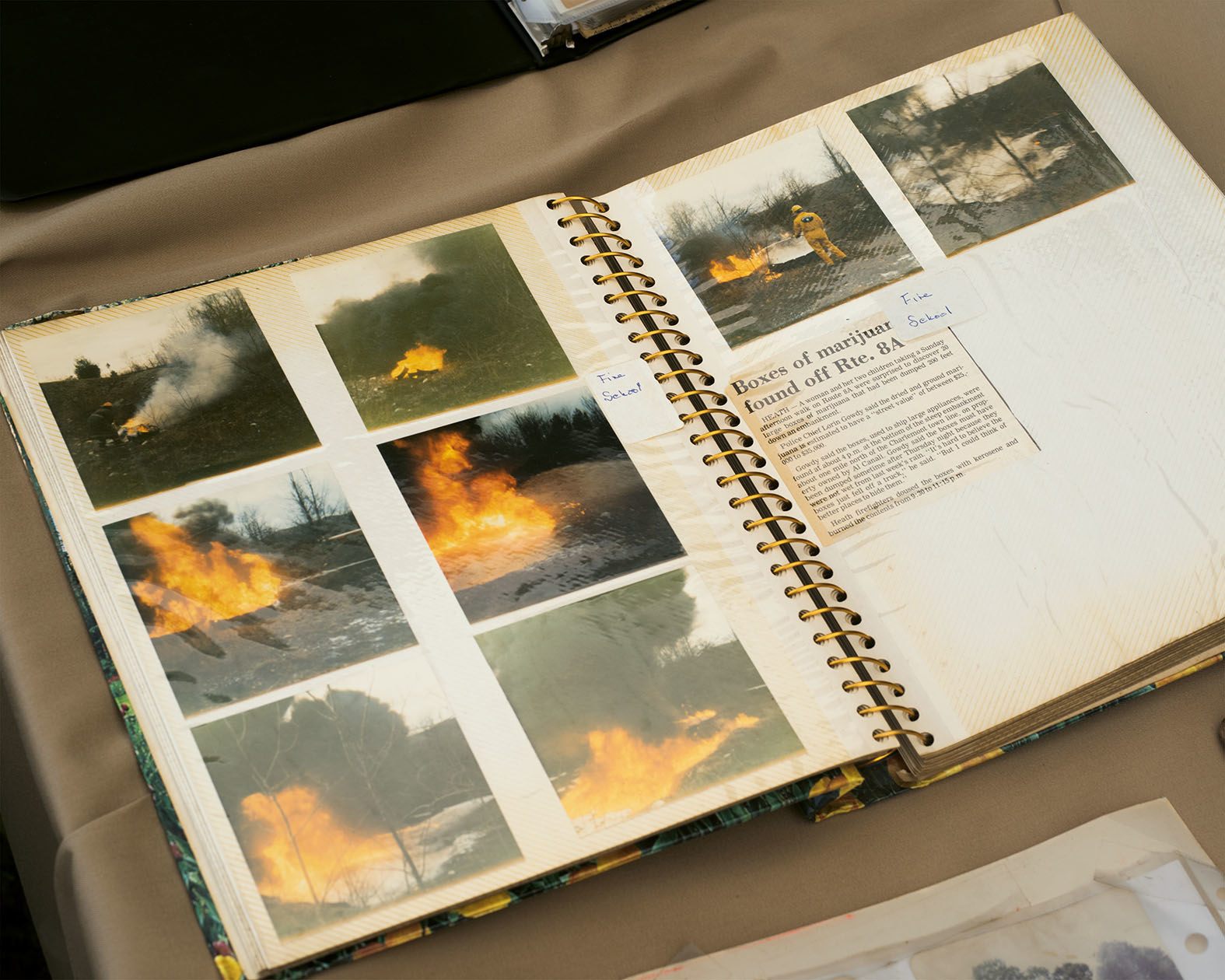
Do you consider this work to be a documentary?
I think that photographers, especially in this day and age, are really struggling with that term, myself included. Looking at the world and responding to it, which is how we were trained to be photographers, it's not the most popular way to work right now, at least as far as gallery sales go. It definitely is not photojournalism. I don’t pretend to have any photojournalistic integrity, because I don’t think it's possible to really do that. Using the term “documentary” lends this sense that I'm trying to tell a certain truth, that I'm an unbiased observer. And that's not what I'm trying to do.
The thing that I really like about photography and something that I've always been enamored by is its inability to tell the truth. Even a photojournalist, they can't always tell the truth. It's always going to be this one person's view. Every picture has a before and every picture has an after, and these infinite possibilities can happen within a book like this. It really comes down to how those pictures are put together and the narrative that comes up, and it comes back to the photographer, which is why I feel that the term “documentary” is really hard to digest. While I'm photographing real things in the real world, the bottom line is still the very subjective approach of my own.
This area is not a wasteland, and I've been very explicit about that. It's still New England. We still have tons of tourists. There is still foliage. There are restaurants in town. It's not all post-industrial depression here, but it is here, and that's what I'm looking at. As a documentarian, I would have to include [everything], but I’m not. I don’t actually have a good term for what it is that I'm doing.
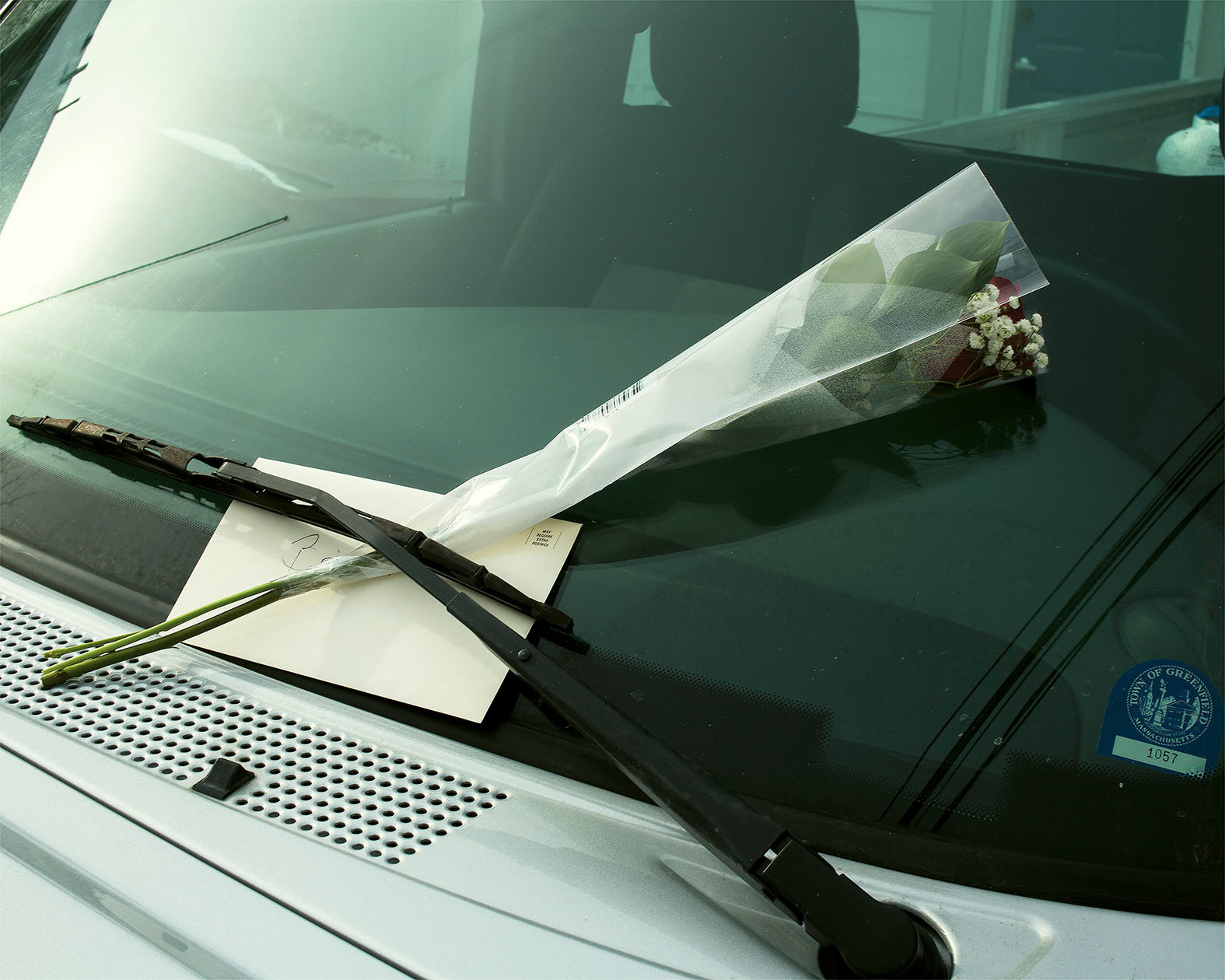
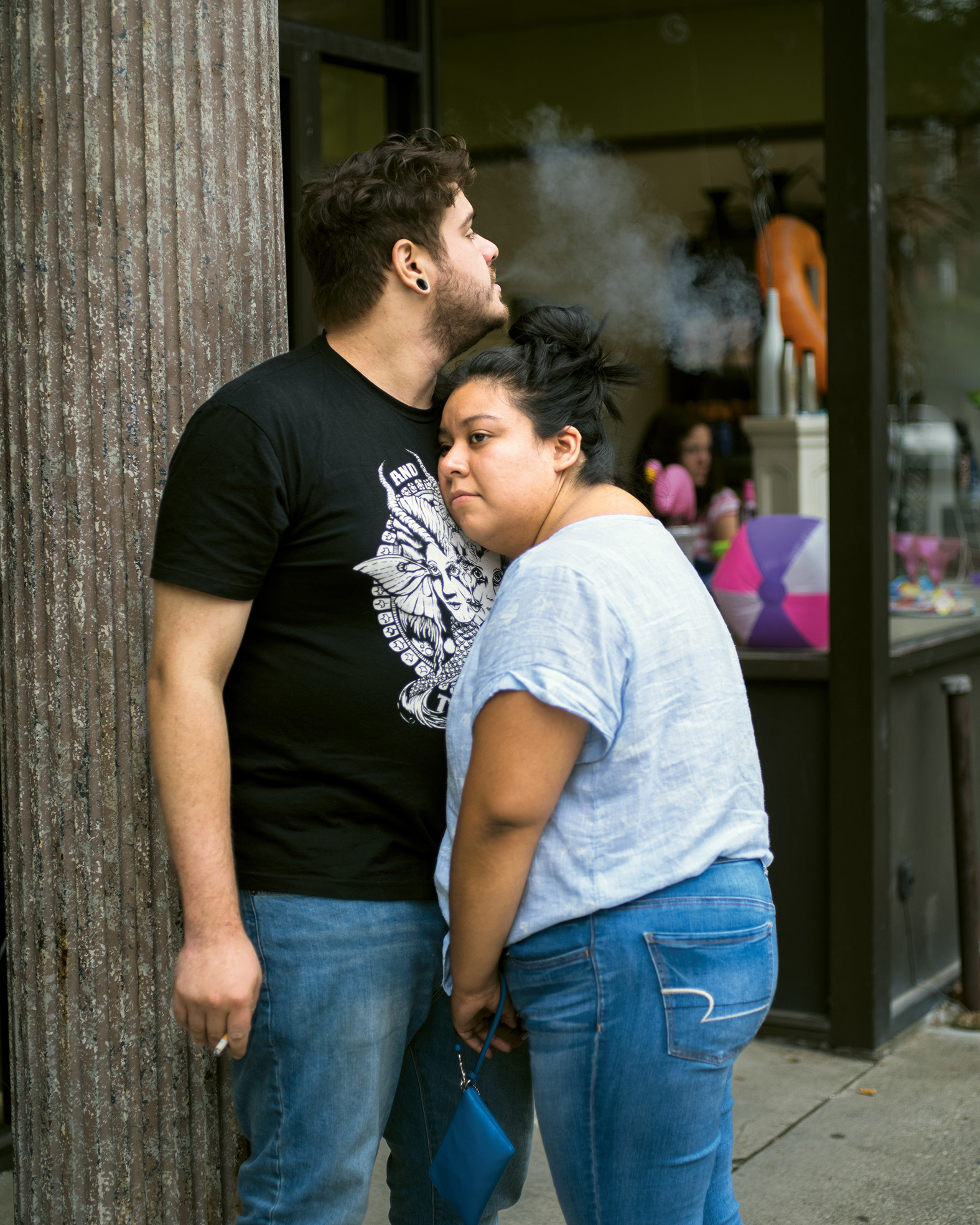
How do you want viewers to interpret this work?
The bottom line would be that people see the book because it itself is different from a few images splashed here and there, and it reads differently. In putting the book together, I am thinking a lot about how a poem works with a certain flow to it. I want people to look at the book with the feeling of moving through a town, which may be melancholy, may be heartbreaking at times, but still feels respected and seen. I want the viewer to feel immersed in that. That would be my goal.
The criticism is that it's looking at this bombed-out postwar town. There is that side of it, but my hope is that I convey a love and respect for the place. I feel more connected to this place now than I did before. I feel more aware of everything. I have a better understanding of where I am and what it means to be here. I have a lot of privileged information in that. I got to meet and talk to a lot of people I would otherwise have passed by. I got a lot of really wonderful and powerful and poignant stories, and those moments have really lasted with me.
It's through a personal lens I'm trying to convey the sense of any hometown, but in this case it is my hometown.
Any final thoughts?
What I really hope is that people do the work to understand it's not meant as an indictment at all. It's meant as something much more benign — that this is just life happening, and it's good and bad. It can be hard; it can be heartbreaking, but it's there. And I hope people have that experience of wandering and looking and seeing and sort of slowing down.
